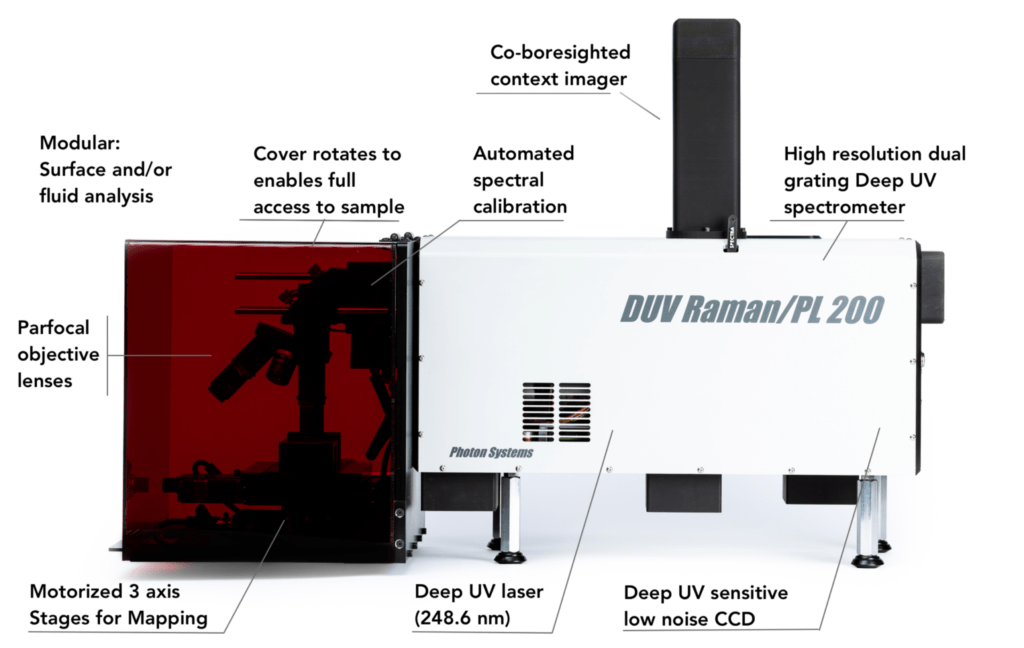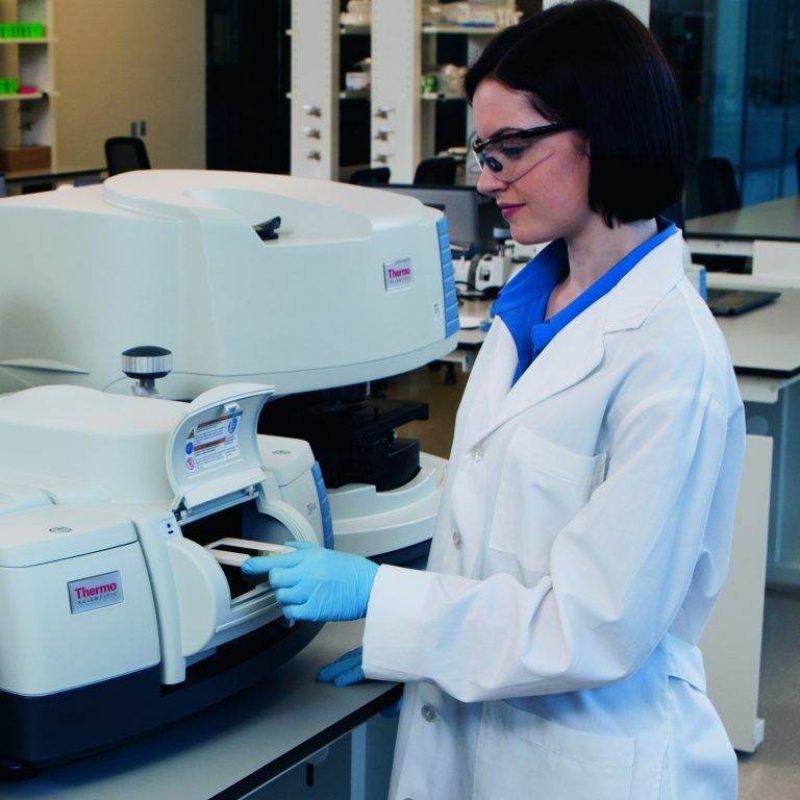Measurement of photoluminescence spectra (PL spectra) is one of the basic characterization methods of quality analysis of various materials (especially semiconductors). Using this technique, it is possible to obtain e.g. information on alloy composition, bandgap and edge effects, semiconductor dopants, etc. The possibility of simultaneous measurement of UV resonant Raman spectra also allows better characterization of the measured materials. Spectrometer for remote UV measurements (Deep Ultra Violet: DUV)
Raman/PL 200 is an ideal system in terms of compactness and especially the performance/price ratio. In terms of Raman microscopy, it is a fully integrated laboratory system enabling simultaneous acquisition of deep UV Raman resonance spectra and PL spectra, including micro-imaging of samples.

Description and possibilities of the Raman/PL 200 system:
- Spectrometer operating at room temperature: PL and Raman spectra (SERS measurement is also possible).
- Excitation 248.6 nm, or as required
- Monochromator: 200 mm Czerny Turner equipped with 4,200 – 600 g/mm holographic gratings
- Dispersion: 1.9 cm-1/pixel
- Resolution of Raman spectra: less than 8 cm-1 (60 micrometers slit)
- Measuring range: 300 – 4000 cm-1
- Detector: TE cooled CCD UV camera
- Libraries of Raman and PL spectra
- Objectives: 3x, 5x, 15x, 40x DUV etc.
- Camera: 2,4 M pixel
- Software controlled grid selection and system calibration
- Labview software, software control of laser, spectrograph, detector, editing of acquired spectra, conversion to other formats, etc.
- Manual X-Y-Z table, or special motorized mapping table (50 x 50 mm, step 2 micrometers)
- Wide selection of accessories: flow cells, sample holders, etc.
- Liquid nitrogen sample cooling available (cooling stage). For semiconductor materials, sample cooling allows direct calculation of quantum efficiency and precise defect analysis
Some of Raman PL 200 system applications:
- Detection of residues from the production of explosives (TNT, PETN, C4, Semtex, etc.)
- Quantitative determination of nitrates and nitrites in water
- Forensic analysis of fingerprints
- Identification of unknown powders and residues (detection of biomaterials, proteins, pollens, microbiological materials, etc.)
- Analysis of forged documents (inks, paints, etc.)
